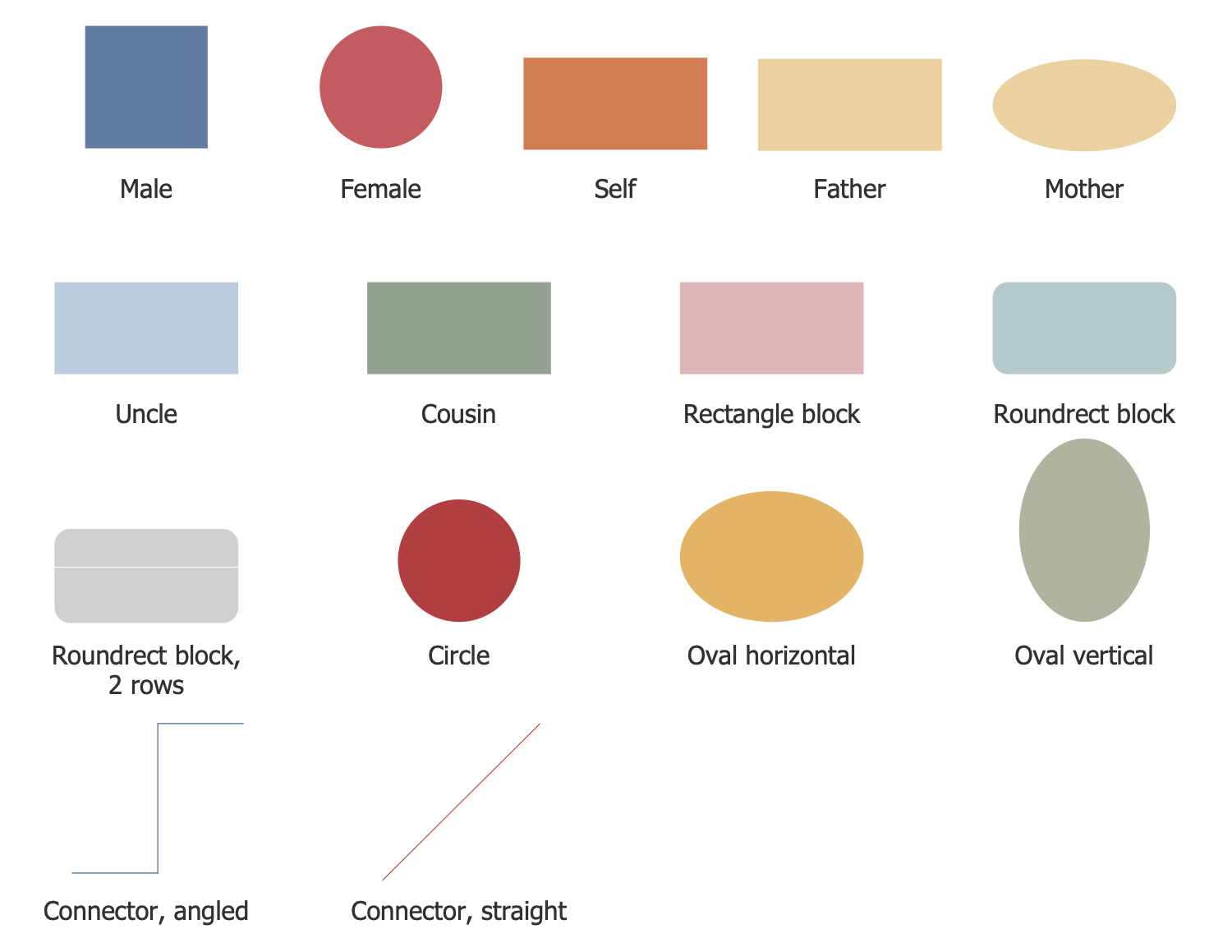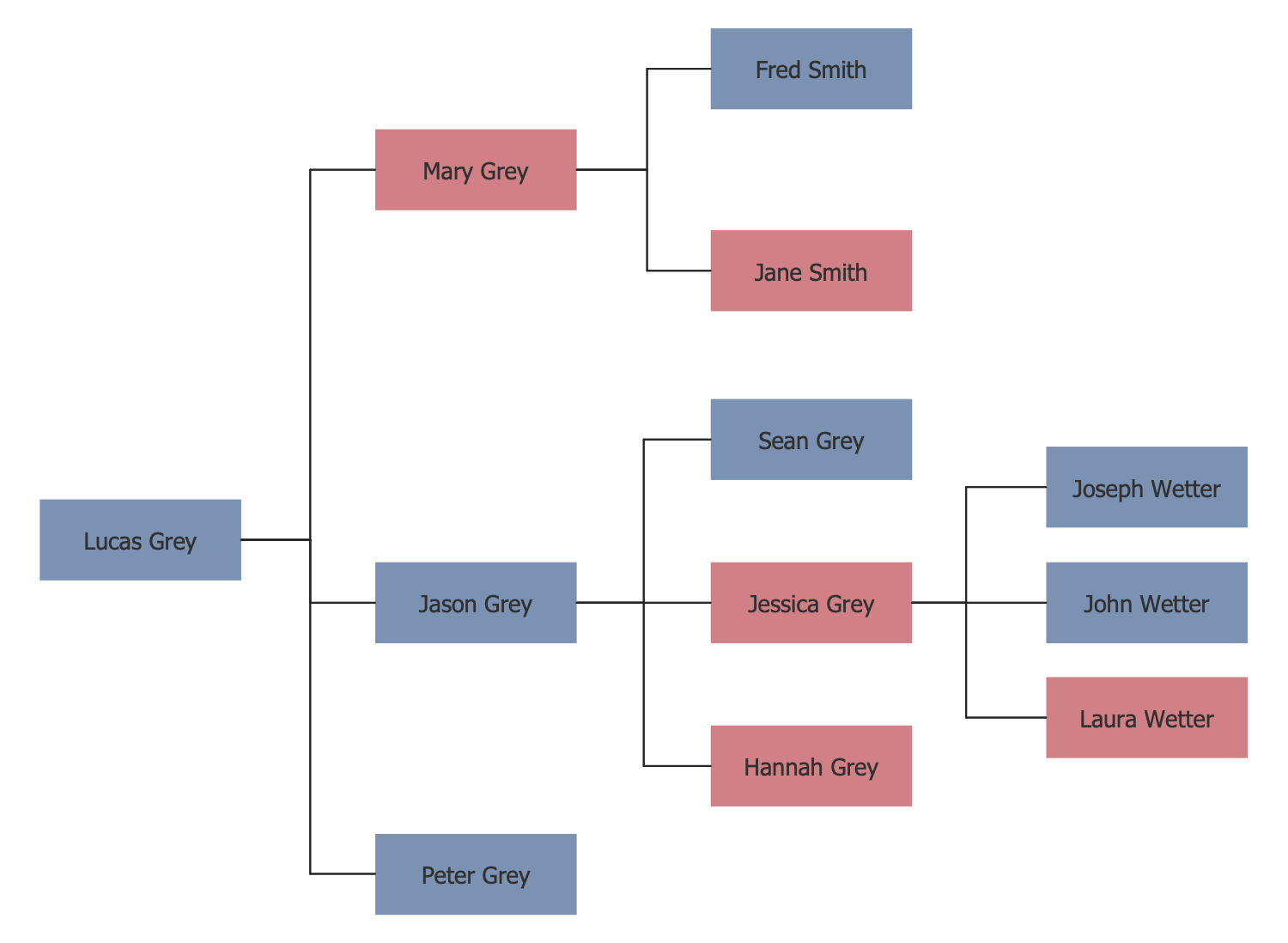Family Lineage
Family lineage is defined as a group of people related to each other as the direct descendants of a single progenitor or ancestor. One differs the matrilineage (maternal side) and patrilineage (paternal side). According to the culture, paternal and maternal lineage are equal or a single prevails and defines the rules of inheritance, culture propagation, etc. It also has value for most cultures, where the marriage of two people from a single clan or lineage is frowned upon. Mostly it is because of the biological considerations to ensure sufficient gene variation.
Family lineage is useful for tracking the origin of lineage. Sometimes, descent groups are divided into residential groups called clans, and then into lineages. Lineage is the smallest unilateral descent group, which members have very strong links. Lineage tracing is a useful and efficient way to delineate complex hierarchy, specialties, and relationships. Often the family lineage is an important and reliable source of healthcare and genetics information, and key to prescribe efficient treatment. Lineage trees are often based on DNA, RNA, or protein sequence data, show morphological differences and similarities.
The most insidious traits can pass through generations. Sometimes the predisposition to some illnesses, addiction, or depression is genetically based. The detailed family trees used in medicine and social work are known as genograms. The trusted and structured patient health data in the form of genograms help to examine these patterns and spot anomalies easier. They help to identify the family's strengths and weaknesses in order to strengthen the first ones and overcome the second.
Getting started drawing your family tree, decide how far back you want to go, who you want to include as the 'leaves' and what type of data to outline for them, only dates of birth, or also marriage and other important events. Then you should collect the information. Start with some research, use the documents to collect information, and write what you know. Each generation has value and passes a piece of themselves to their family and future generations. They pass genetic values, spiritual values, and things. And these are not obligatory treasures, but often simple things valuable for this time and this generation like photos, books, pictures, musical instruments, furniture, and other belongings, showing the culture and events.
Information and data that seem hard to perceive become easily overseen when they are mapped. You can draw your family lineage freehand using pencil and paper, but making it with powerful design software is more convenient. Get started with software ConceptDraw DIAGRAM enhanced with Family Tree solution and ensure that drawing family trees has never been easier. But first of all, collect enough data because a family tree becomes most valuable when it includes information about several generations.
The location to begin collecting data is your home or home of your closest relatives, particularly older relatives. Call, write a letter, or preferably visit your relatives personally and you can gain a lot of information and data, certificates, licenses, newspaper clippings, diaries, letters, photos, and many other documents. You can also perform a telephone survey with your relatives or invite them all to you to take some fascinating information and family stories to preserve them for future generations.
Libraries, family history centers, societies, state, regional, and local institutions, archives, and non-government archival repositories are also helpful and usually hold newspapers, public and private papers, and records. The National Archives and Records Administration may keep records useful for your genealogical research, data on federal censuses, military records, court records, data about taxation, land ownerships, passengers’ arrival, etc. County records may include deed records, births, marriages, and deaths records, probate records, voting records, and many more. These records are good sources of genealogical data. The data dating earlier than 18-19th centuries are usually found in church records and family bibles. Knowing the purpose of your future family tree will easier determining the type of information to look for. Then compile and organize the collected information in a family tree.

Example 1. Family Lineage Design in ConceptDraw DIAGRAM Software
Identify the person around which the tree is centered and start drawing with him as the "root". Showing your family lineage in the form of a family tree, you can start with yourself and known close relatives like parents, grandparents, great-grandparents, and proceed toward the unknown ancestors. Another way is to start from the oldest ancestor you know about and trace the history forward to you. Add the family members one generation after another, link new individuals with those related to them until your tree reflects an entire image of your family. Usually, the family members are shown by boxes or ovals, these are the "leaves" of the tree.
The oldest generation is usually shown at the top of the diagram and the youngest at the bottom. The lines going from the root to the leaves represent branches. The father is usually drawn on the left and the mother on the right. As a rule, the children follow from left to right by age, beginning with the eldest child. Enter all relevant information you have, like names of the family members, dates of events in their lives (birth, marriage, death), places they lived, education, occupation, contact information, etc. Show relationships and customize colors.
Example 2. Family Tree Library Design Elements
Family Tree solution includes professionally designed and easy-to-use templates. You can choose any you desire and fill it to fit your needs and requirements. You can design the family tree as simple or as detailed as you want, with or without digging too deeply, autosomal dominant pedigree chart and other types. A simple tree usually includes the person, his parents, grandparents, and maybe great-grandparents. A more detailed family tree may also include siblings, aunts, uncles, cousins, and other non-direct relatives. Use the basic shapes, lines, and symbols included in solution libraries to visualize the lineage quickly and without any effort.
Highlight important information or episodes in a person’s life. It is also efficient to add emotional relationships between family members. Record the family history in a visual way quickly and easily. Once you have finished your lineage diagram, share it with other family members by e-mail as a ConceptDraw file, export it to one of the graphical file formats or generate a PowerPoint presentation or PDF file. Add notes and modify your tree as you discover new information.
Example 3. Family Tree
The Family Trees samples you see on this page were created in ConceptDraw DIAGRAM software using the drawing tools of the Family Tree Solution. These examples successfully demonstrate solution's capabilities and the professional results you can achieve using it. An experienced user spent 10-15 minutes creating each of these samples.
Use the powerful tools of the Family Tree solution to design your own Family Trees and Genograms quick, easily, and effectively.
All source documents are vector graphic documents. They are available for reviewing, modifying, or converting to a variety of formats (PDF file, MS PowerPoint, MS Visio, and many other graphic formats) from the ConceptDraw STORE. The Family Tree Solution is available for ConceptDraw DIAGRAM users.

